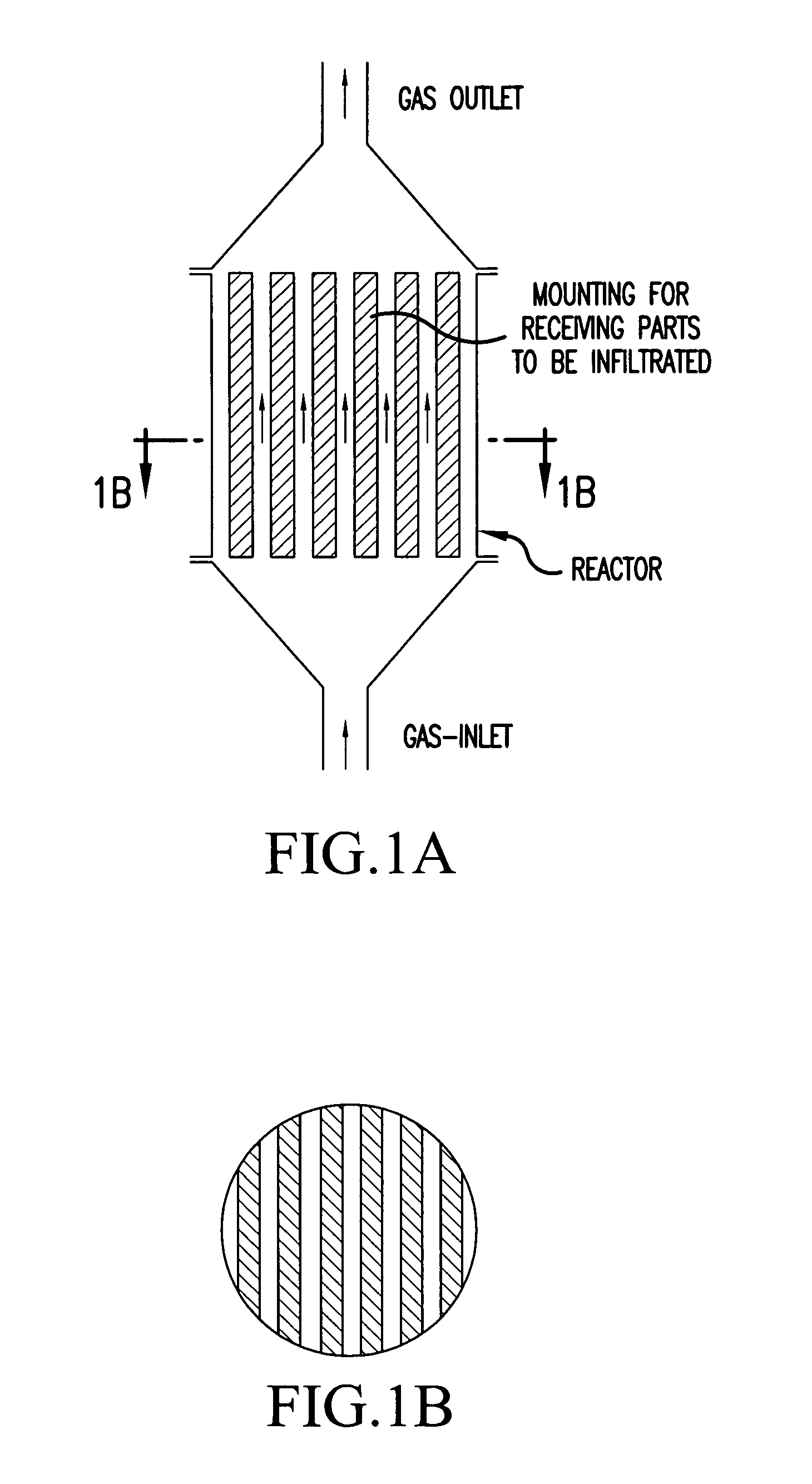Pressure swing CVI/CVD
a technology of pressure swing and cvi, which is applied in the direction of coating, chemical vapor deposition coating, metallic material coating process, etc., can solve the problems of clogging pores, destroying the whole process, and both chemical vapor deposition and chemical vapor infiltration are extremely complex processes
- Summary
- Abstract
- Description
- Claims
- Application Information
AI Technical Summary
Benefits of technology
Problems solved by technology
Method used
Image
Examples
Embodiment Construction
[0027]According to the present invention, low temperatures can be employed for vapor infiltration. According to a preferred embodiment, temperatures in the range of 1000 to 1200° C. are set in the reaction zone for vapor infiltration of carbon fiber preforms. Gas is passed over the porous structure which comprises a by-product generated during vapor infiltration. Preferably higher hydrocarbon enriching gases such as propane are added to the methane or natural gas primary reactant gas for vapor infiltration of the carbon fiber preform. The volume ratio of methane or natural gas to added enriching gas is typically more that 5:1.
[0028]In accordance with the present invention, low pressures or partial pressures must be used, especially pressures of at most 50 torr and as low as 10 torr.
[0029]The method according to the invention may be conducted in a reactor having a specific reactor construction, or at least in a reactor with a special mounting. Reactors of the type shown in U.S. Pat. ...
PUM
| Property | Measurement | Unit |
|---|---|---|
| pressure | aaaaa | aaaaa |
| temperature | aaaaa | aaaaa |
| width | aaaaa | aaaaa |
Abstract
Description
Claims
Application Information
 Login to View More
Login to View More - R&D
- Intellectual Property
- Life Sciences
- Materials
- Tech Scout
- Unparalleled Data Quality
- Higher Quality Content
- 60% Fewer Hallucinations
Browse by: Latest US Patents, China's latest patents, Technical Efficacy Thesaurus, Application Domain, Technology Topic, Popular Technical Reports.
© 2025 PatSnap. All rights reserved.Legal|Privacy policy|Modern Slavery Act Transparency Statement|Sitemap|About US| Contact US: help@patsnap.com



